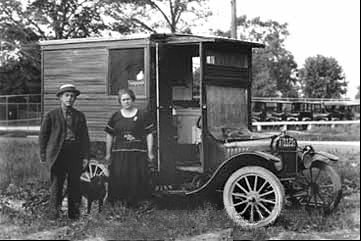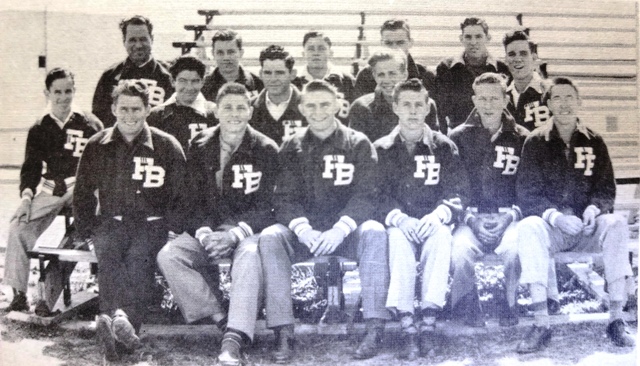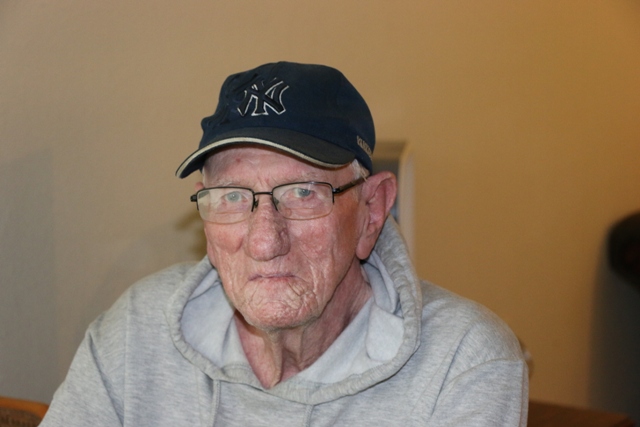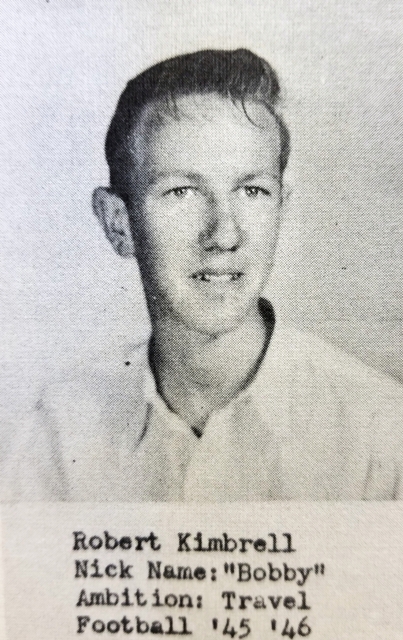To preserve the rich history of Flour Bluff, The Texas Shoreline News, will run historical pieces and personal accounts about the life and times of the people who have inhabited the Encinal Peninsula. Each edition will feature the stories gleaned from interviews held with people who remember what it was like to live and work in Flour Bluff in the old days. You won’t want to miss any of these amazing stories.
Life and Times of Bobbie Kimbrell, Part I
Bobbie (not Robert) Kimbrell came to Flour Bluff in 1944. Born July 11, 1930, in Clarksville, Texas, and later moving to Aransas Pass with his mother, he then joined his father in Flour Bluff to become a commercial fisherman, eking out a living in the Laguna Madre and surrounding waters until 1999 when he checked his trotlines for the last time.
Bobbie’s father, Samuel Acie (Ace) Kimbrell as everyone called him, was a cement man. “Ninth grade was the highest you could go in Comanche County then,” Bobbie said referring to his father’s shortened education. “In the early thirties, he met a surveyor who was passing through. He taught my dad how to survey. He started working for contractors who built culverts and small cement bridges. That was when they first started building paved roads through Texas.” Bobbie explained that when a new job would come up, his dad would go out with the contractors and survey and find out what the job would cost.
“If the contractor won the bid, my dad would work as a sub-contractor and use the tools and machinery of the contractor. Then, he’d hire one or two of his brothers, and just two or three people would do the whole job,” said Bobbie. Kimbrell said his dad hired two men of Mexican descent to do the cement finishing. “They could do whatever finish was needed on the cement and were known all over Texas as the best there was,” he added.
At one point, Ace was doing work for Brown and Bellows, which became Brown and Root. “They were doing construction on the base. That’s how he got down here,” said Bobbie. “After they finished the base, he went to work building landing craft boats in Rockport. He built some crash boats, too, for sea planes. About a year before the end of the war, they had built all the boats the Navy needed for the invasion. There was no more work, so my dad started fishing. He spent most of his time off fishing with a rod and reel just about anywhere there was some water, but he didn’t know anything about commercial fishing. He nearly starved to death to start with,” said Bobbie with a chuckle. “The other fisherman helped him make a go of it.”
“Fishermen are the best people there are,” Ace once told Cliff Avery, Caller-Times reporter. “And we get the cream of the crop,” he said of those who frequented the Red Dot Bait Stand.
Bobbie agrees that most fishermen were very generous and would give a person the shirts off their backs and would even help them learn how to catch fish, but they would hardly ever tell where they made their catch, at least not the exact locations. In an article he wrote for the Island Moon, Bobbie translated the language of the local fishermen in their references to their fishing spots:
- Up toward the bulkheads (where Corpus Christi Bay meets the Laguna Madre)
- Down below (south of Pita Island
- Lower End (south of Baffin Bay or before Nine Mile Hole)
- Graveyard (Nine Mile Hole, a place where fish suffocated in the hot, salty water in the summertime when the tide got so low the fish were trapped in the hold)
- Fishing in the flats (in shallow water)
- Fishing in the deep or on the Padre side (east side)
- King Ranch side (west side or west shore)
Bobbie describes Flour Bluff as a place where “there weren’t any roads really,” but there were “a lot of scrub oak with a few houses scattered around.” He lived with his dad in a little camp at the edge of the water where Glenoak meets Laguna Shores today. “We lived in a Model T van, like the ones the gypsies lived in that you saw in the circus,” recalled Bobbie. “We didn’t have any electricity or running water. We used a Coleman lantern and a Coleman stove. We got our water from the school. Somebody would fill a barrel and haul it to us in the back of a truck. After we’d been living there about a year, a storm came and blew everything away.”

The Model T “van” pictured above in this Creative Commons photo was often called a “house car” or “camper,” a forerunner to motor homes and RVs, a common site in Flour Bluff today.
Years later, after going through many storms and having Celia rip the roof of the Red Dot Bait Stand, Bobbie’s dad told a reporter, “You work for the hurricanes out here. ‘Bout the time you get one paid off, another comes along.”
When the Kimbrells were left homeless by the storm, one of the Duncans who lived a little south of Glenoak let the father and son move onto his land. Bobbie remembers how then school superintendent and local businessman Sherm Hawley talked the officials at the base into giving them a pre-fab, 20’ x 20’ plywood building to use as a house. “It had a wood floor, plywood sides, and a roof. At that time, there were at least 4 or 5 of them on NAS Drive that some of the workers lived in.”
Bobbie helped his dad fish while he was attending Flour Bluff School. “Dad taught me to fish, but I only fished on weekends when I was going to school. He wanted me to go to school and sometimes even made my games,” said Bobbie. “He was trotline fishing in the daytime then and could make the games in the evenings.”
“I played football for two years for Flour Bluff. That was the second year we had a 12-man team,” said Bobbie. “A guy named Meixner was our coach. He was the only coach for the whole school. I liked him. Looking back, I don’t think he was a very good football coach, but he was one of the best basketball coaches Flour Bluff ever had. His team usually won every tournament they played.”

Coach Meixner is top left; Bobbie Kimbrell is next to the end on the bottom row. (1945-1946 Hornet Yearbook photo)
“Another teacher who was really good was Mr. Duncan. He taught shop and mechanical drawing,” said Bobbie as he thought about his school. “Mr. Wranosky took Mr. Hawley’s place as superintendent when I was in twelfth grade. I liked him because he wasn’t overly strict,” he recalls. “One time we were playing Ingleside in football, and I played end. I made a real good block, and we got a touchdown. Mr. Wranosky gave me fifty cents. I guess you could say I was a paid player.”
_________________________________________________________________________________
Be sure to pick up the next edition of The Texas Shoreline News to learn more about Bobbie Kimbrell’s life as a commercial fisherman and life in Flour Bluff. Read through back editions for other Flour Bluff history articles.
The editor welcomes all corrections or additions to the stories to assist in creating a clearer picture of the past. Please contact the editor at Shirley@texasshorelinenews.com to submit a story about the early days of Flour Bluff.


